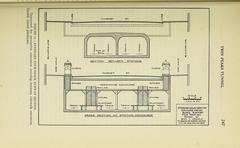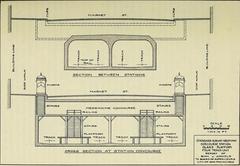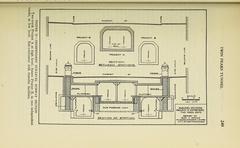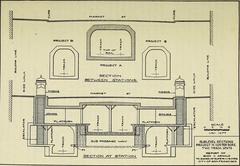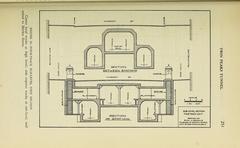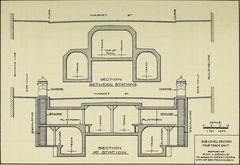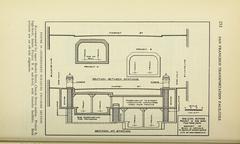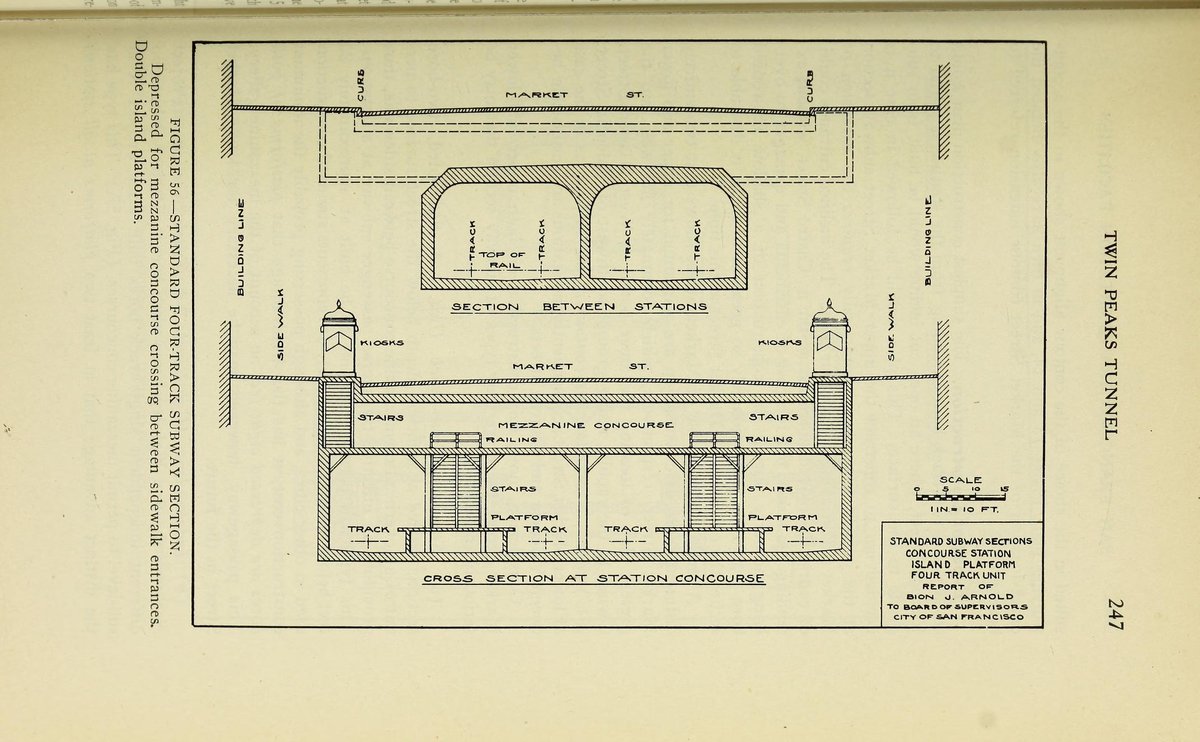
Market Street Subway San Francisco: Visiting Hours, Tickets, and Travel Guide
Date: 14/06/2025
Introduction
The Market Street Subway is the backbone of San Francisco’s urban mobility, linking key neighborhoods, historic landmarks, and bustling commercial centers beneath the city’s iconic Market Street. Serving both Bay Area Rapid Transit (BART) and Muni Metro, this dual-level underground corridor is vital for commuters, tourists, and transit enthusiasts. Since its ambitious conception in the early 20th century and completion in the late 1970s, the subway has embodied San Francisco’s continuous pursuit of efficient, accessible, and integrated public transit. This comprehensive guide details the subway’s rich history, operating hours, ticketing options, accessibility features, travel tips, nearby attractions, and answers to common visitor questions. For the latest updates, always refer to the official SFMTA website and BART website (Streetcar.org; Wikipedia; sfstandard.com).
Table of Contents
- Introduction
- Historical Background
- Visiting the Market Street Subway
- Frequently Asked Questions (FAQ)
- Visitor Resources and Maps
- Conclusion and Recommendations
- References
Historical Background
Early Visions and Proposals (1900s–1930s)
The dream of a subway beneath Market Street originated in the early 20th century, as city leaders sought to alleviate the mounting congestion of cable cars, horse-drawn vehicles, and electric streetcars (SFMTA). By 1918, four tracks spanned Market Street, serving both the Municipal Railway (Muni) and the private Market Street Railway Company (Wikipedia). In 1930, City Engineer Michael O’Shaughnessy envisioned a multi-track subway with close-spaced stations and connections to existing tunnels (Streetcar.org). However, political and financial roadblocks, especially the dominance of private transit operators, delayed progress for decades.
Postwar Momentum and the BART Era (1940s–1960s)
After World War II, San Francisco’s growing population and traffic congestion revived the push for underground rapid transit. The formation of the Bay Area Rapid Transit (BART) District in the late 1950s culminated in the 1962 voter approval of a bond issue to fund both BART and a two-level Market Street Subway. The lower level would accommodate BART trains, while the upper level would serve Muni’s light rail vehicles (Streetcar.org; Wikipedia).
Engineering Challenges, Construction, and Modernization (1967–Present)
Construction began in 1967, employing the cut-and-cover method and contending with hundreds of utility lines and challenging soil conditions (FoundSF). The project’s engineering feats included slurry walls, deep pilings, and complex tie-ins with the Transbay Tube under San Francisco Bay. Despite delays caused by vehicle procurement and operational compromises, the subway’s first official ride took place in 1978, and full service began by 1980 (SFMTA; Railway Age; Streetcar.org). Integration with the Central Subway and ongoing modernization efforts, including upgrades to accessibility and infrastructure, continue to shape the subway’s role today.
Visiting the Market Street Subway
Visiting Hours
- BART: Trains operate from approximately 5:00 AM to midnight on weekdays, with slightly reduced hours on weekends (bart.gov).
- Muni Metro: Service generally runs from 5:00 AM to 1:00 AM, with Night Owl buses replacing trains during late-night hours (SFMTA).
- Holiday and Event Schedules: Always check the latest BART and SFMTA updates for special schedules, particularly during citywide events or maintenance.
Tickets and Fares
Clipper Card
- What it is: A contactless, reloadable payment card usable on BART, Muni Metro, Muni buses, ferries, cable cars, and more (clippercard.com).
- Where to buy: Station vending machines, authorized retailers, or via the Clipper app (also supports Apple Pay and Google Pay).
- Initial fee: $3 for a physical card; no fee for mobile wallet.
Fare Structure
- BART: Distance-based fares, typically $2.50–$12.90 per ride.
- Muni Metro: Flat fare ($3.00 adult), with discounts for youth, seniors, and disabled riders (SFMTA Fares).
- Transfers: Separate fares for BART and Muni; both accept Clipper Cards but require separate taps when transferring.
- Visitor Passes: Muni Visitor Passports and CityPASS offer unlimited Muni rides for 1, 3, or 7 days (not valid on BART) (San Francisco Subway).
Accessibility
- All Market Street Subway stations are ADA-compliant, with elevators, ramps, tactile paving, and accessible boarding areas (SFMTA Accessibility; BART Accessibility).
- Real-time elevator and escalator status is updated on official transit websites.
- Priority seating is available on all trains.
Travel Tips
- Avoid Rush Hours: For a more comfortable journey, travel outside of 7:00–9:00 AM and 4:30–6:30 PM.
- Navigation: Look for clear, color-coded signage distinguishing BART (lower level) from Muni Metro (upper level).
- Luggage: Store items under your seat or in designated areas; avoid blocking aisles.
- Bicycles: Allowed on BART outside of peak hours; folding bikes permitted on Muni Metro at all times.
- Safety: Keep valuables secure, allow others to exit before boarding, and use headphones for audio.
Nearby Attractions and Historic Sites
- Embarcadero Station: Steps from the historic Ferry Building, waterfront piers, and F-Line historic streetcars (BARTable).
- Montgomery Street Station: Close to SFMOMA, Yerba Buena Gardens, and the Financial District.
- Powell Street Station: Next to Union Square, Chinatown, and the cable car turnaround.
- Civic Center/UN Plaza Station: Adjacent to City Hall, the Asian Art Museum, and major performance venues.
For guided tours, several local operators highlight the subway’s engineering and historical significance—check with SF City Guides and other providers.
Frequently Asked Questions (FAQ)
Q: What are the Market Street Subway operating hours?
A: BART: 5:00 AM–midnight; Muni Metro: 5:00 AM–1:00 AM. Always verify the latest schedules before your trip.
Q: How do I buy tickets?
A: Use Clipper Cards, available at station vending machines, authorized shops, or as a mobile wallet. Visitor Passports are ideal for unlimited Muni rides.
Q: Is the subway accessible for people with disabilities?
A: Yes, all stations and trains are ADA-compliant, with elevators, tactile paths, and priority seating.
Q: Can I bring my bicycle?
A: Bicycles are allowed on BART outside peak commute hours; folding bikes are permitted at all times on Muni Metro.
Q: What historical sites are near the Market Street Subway?
A: The Ferry Building, City Hall, Union Square, Chinatown, and the Asian Art Museum are all easily accessible.
Visitor Resources and Visuals
- Market Street Subway Map (BART & Muni Metro)
- SFMTA Official Website
- BART Official Website
- SF Travel Visitor Guide
- Lonely Planet: Getting Around San Francisco
- Trip Planners: BART | SFMTA
For enhanced trip planning, use the Audiala app for real-time transit updates and personalized navigation.
Conclusion and Recommendations
The Market Street Subway is more than just a rapid transit line—it’s a living piece of San Francisco’s history and a vital artery connecting the city’s diverse neighborhoods, economic centers, and cultural destinations. Its dual-level design, comprehensive accessibility, and integration with historic streetcars and modern light rail make it one of the most unique transit systems in the United States. Whether you’re commuting, sightseeing, or exploring the city’s storied past, the Market Street Subway makes San Francisco accessible and vibrant.
Visitor Tips:
- Purchase a Clipper Card for seamless travel.
- Plan trips during off-peak hours for comfort and convenience.
- Check official transit websites or the Audiala app for service alerts and updates.
- Explore nearby historical sites directly accessible from subway stations.
For the most current information and fare details, always consult the SFMTA and BART official resources.
References
- Ever Changing Market Street, SFMTA
- Market Street Subway, Wikipedia
- Market Street Subway Dreams, Streetcar.org
- Forty Frustrating Years Underground, Streetcar.org
- Building San Francisco’s BART Tunnels, FoundSF
- A Day in History: Market Street Subway Milestone, Railway Age
- Modernizing Muni 1962-1982, Streetcar.org
- San Francisco Market Street Pandemic Big Plans Collapsed, SF Standard
- Getting Around San Francisco, Lonely Planet
- Transportation Basics: How to Use Muni, SF Travel
- Better Market Street Project, San Francisco Public Works
- Rider Information Map, Streetcar.org
- San Francisco Subway, SanFrancisco.net
- Getting Around San Francisco, SFTourismTips
- City Guide: June Street Fairs & Festivals, SF FunCheap
